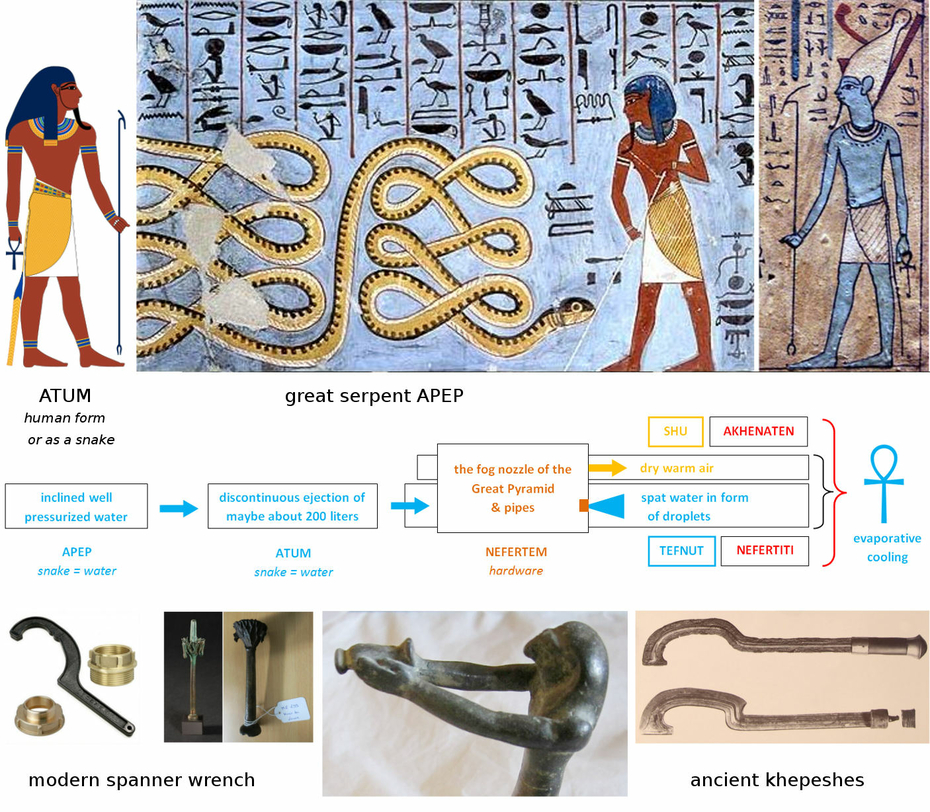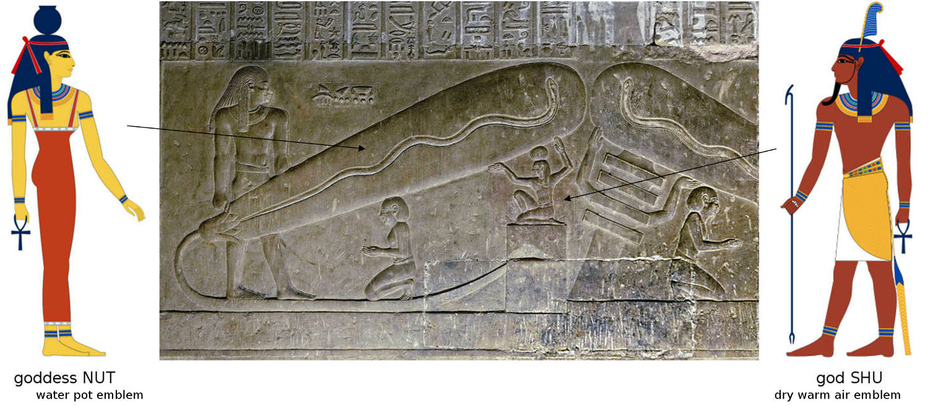- Retour accueil
- Vous êtes ici : Blog Ancient Egypt
Tous les articles Actualités Ancient Egypt Chemistry in Ancient Egypt La Grande Pyramide d'Égypte Nouveauté The Great Pyramid of Khufu The Great Pyramid of Khufu / Dendera Temple The Pyramids of the Cold The Pyramids of the Cold v2
Ancient Egypt

Bes immobilizing Taweret is the wedging block of the Great Pyramid inclined Well ©2022
Publié par Bruno Coursol dans Ancient Egypt le 08/04/2022 à 17:37
Bes : the wedging block that was immobilizing the Taweret block This post is the continuation of the Taweret post and will focus on the wedging block that immobilized the ...Lire la suite
Taweret : the Lady of the well ©2022
Publié par Bruno Coursol dans Ancient Egypt le 08/04/2022 à 17:36
Apis was the most important bull deity of ancient Egypt. The Apis bull was originally a god of fertility, worshiped as early as the First Dynasty (c. 3150 - c. ...Lire la suite
Atum and the real meaning of snake representations in ancient Egypt ©2022
Publié par Bruno Coursol dans Ancient Egypt le 05/03/2022 à 09:45
Atum "defeating" Apep, the ancient Egyptian great serpent god of Chaos of the Underworld, as explained by scholars. Atum is also frequently represented as a snake and his real meaning ...Lire la suite
The Dendera Light protective magical energy in liquid form described in ancient Egyptian literature is the evaporative cooling fog of the Great Pyramid of Giza ©2021
Publié par Bruno Coursol dans Ancient Egypt le 02/03/2022 à 16:23
The Dendera Light is a fog of microdroplets that is creating cold from dry warm air by the evaporative power of liquid water. Ra's snake form, Harsomtus, and the lotus ...Lire la suite
à votre Service Depuis maintenant 14 ans
Satisfait ou remboursé: 14 jours pour changer d'avis
02 98 29 15 83
Votre Service Client est ouvert du Lundi au Samedi de 8h30 à 18h
Paiement sécurisé
Cryptage SSL: commandez par Carte Bancaire en toute sécurité
Commande chouchoutée
Préparation soignée & Livraison rapide